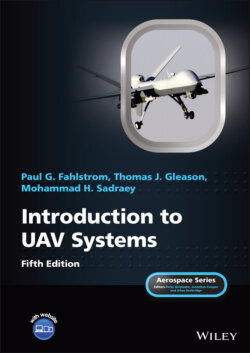Читать книгу Introduction to UAV Systems - Mohammad H. Sadraey - Страница 32
1.4 The Aquila
ОглавлениеThe American UAS called the Aquila was a unique early development of a total integrated system. It was one of the first UAV systems to be planned and designed having unique components for launch, recovery, and tactical operation. The Aquila was an example of a system that contained all of the components of the generic system described previously. It also is a good example of why it is essential to consider how all the parts of a UAS fit together and work together and collectively drive the cost, complexity, and support costs of the system. Its story is briefly discussed here. Throughout this book, we will use lessons learned at great cost during the Aquila program to illustrate issues that still are important for those involved in setting requirements for UAS and in the design and integration of the systems intended to meet those requirements.
In 1971, more than a decade before the Israeli success in the Bekaa Valley, the US Army had successfully launched a demonstration UAV program, and had expanded it to include a high‐technology sensor and data link. The sensor and data‐link technology broke new ground in detection, communication, and control capability. The program moved to formal development in 1978 with a 43‐month schedule to produce a production‐ready system. The program was extended to 52 months because the super‐sophisticated MICNS (Modular Integrated Communication and Navigation System) data link experienced troubles and was delayed. Then, for reasons unknown to industry, the Army shut the program down altogether. It was subsequently restarted by Congress (about 1982), but at the cost of extending it to a 70‐month program. From then on everything went downhill.
In 1985, a Red Team formed to review the system came to the conclusion that not only had the system not demonstrated the necessary maturity to continue to production, but also that the systems engineering did not properly account for deficiencies in the integration of the data link, control system, and payload, and it probably would not work anyway. After two more years of intensive effort by the government and contractor, many of the problems were fixed, but nevertheless it failed to demonstrate all of the by then required capabilities during operational testing (OT) II and was never put into production.
The lessons learned in the Aquila program still are important for anyone involved in specifying operational requirement, designing, or integrating a UAS. This book refers to them in the chapters describing reconnaissance and surveillance payloads, and data links in particular, because the system‐level problems of Aquila were largely in the area of understanding those subsystems and how they interacted with each other, with the outside world, and with basic underlying processes such as the control loop that connects the ground controller to the air vehicle and its subsystems.
